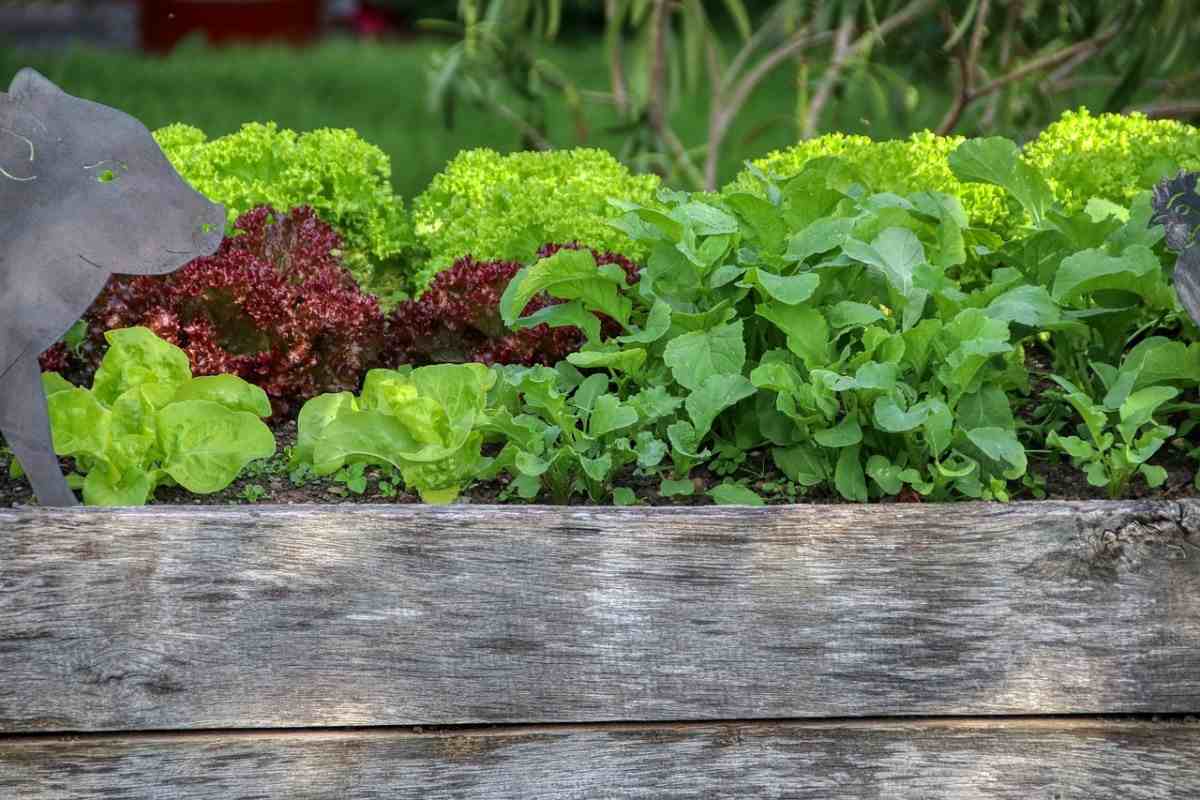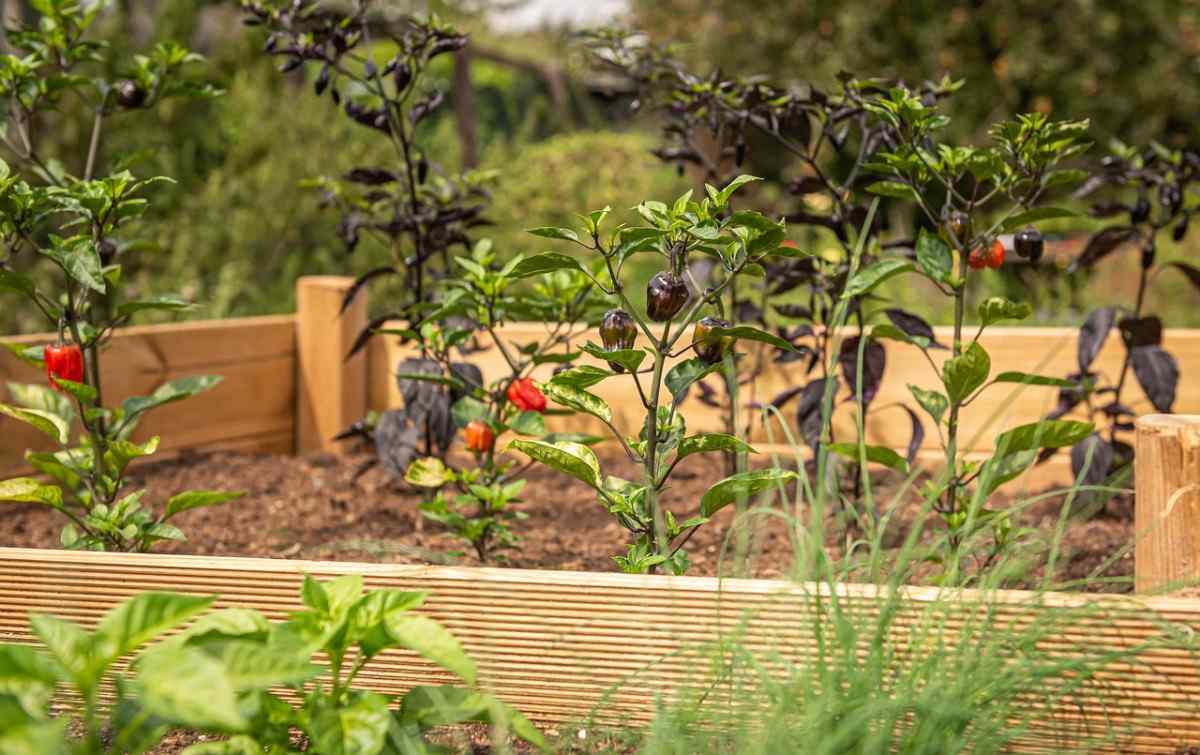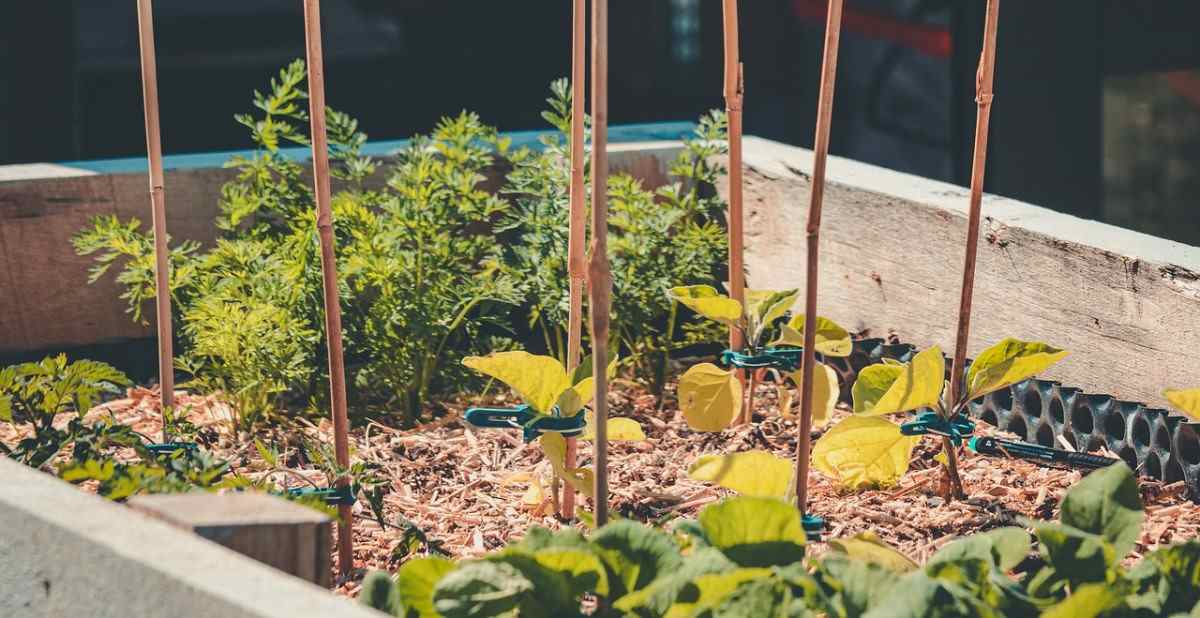Introduction to raised bed gardening Frequently Asked Questions – Raised-bed gardening is a different sort of gardening in which the soil is enclosed in three-to-four-foot-wide or 1.0 to 1.2 meters containment units called “beds”, which are usually made from wood, rock, or concrete and which may be of any length or shape. The soil is raised above the encompassing soil that is approximately six inches to waist-high and should be enriched with compost.
Vegetable plants are spaced in geometric patterns, much closer together than in conventional row gardening. The spacing is such when the vegetables are adult, their leaves just barely touch one another, creating a microclimate in which weed growth is suppressed and moisture is conserved.
A Guide to Raised Bed Gardening Frequently Asked Questions (FAQs)

Raised beds are often as humble or creative as you wish. A raised bed planter is often a permanent fixture for perennial plants to settle in and mature. The initial cost of getting your raised bed found out will depend upon how elaborate you create it, but once in situ, raised beds are not any costlier to take care of than traditional gardens. They provide tons of advantages.
What Is a Raised Garden Bed?
Raised bed gardening involves growing plants in soil that are above the bottom. Most ordinarily, you’ll need to do that with some sort of enclosure or frame made from wood, stone, bales of hay, or maybe repurposed material like old dressers.
What do I place on the rock bottom of a raised garden bed?
The bottom of a raised garden bed needs to be a layer of grass clippings, leaves, wood chips, straw, and other organic material. The cardboard should be placed on top of that layer. The organic material will become compost, while the cardboard will prevent weeds.
How deep should a raised bed garden be?
Eight to twelve inches deep. A raised bed doesn’t need to be very deep to be effective. Eight to twelve inches is typically adequate. If drainage may be a problem, or if the plants you’re growing prefer drier soil, the bed might be taller and crammed with a porous growing medium. Vegetable raised beds should be 12 to 18 inches deep.
What vegetables grow best in raised beds?
The 5 best vegetables to grow in a raised bed are listed below:
- Root vegetables – Root vegetables are perfect for raised beds.
- Leafy greens – Greens like lettuce, spinach, and kale perform marvelously in raised beds.
- Onions – There are three reasons that onions are the right vegetable to grow in raised beds.
- Tomatoes – These grow well in raised beds.
- Potatoes – These are the best vegetables to grow in raised beds.
Should I line my raised garden bed?
You can line your raised bed to form it more durable and to stop toxins from leaching into the soil. For lining, you need to use landscape fabric found at garden supply stores or cloth fabric from clothing. Better to avoid non-porous plastic, because it can retain an excessive amount of water and discourage beneficial insects and worms.
How does one fill a raised bed cheaply?
First, dig a trench that’s about ten inches deep and two feet down the middle of your raised bed. Put down a couple of layers of cardboard to kill any weeds or grass. Then, fill the core of your raised bed. The simplest option for this is often to use straw bales, but you’ll also need to use leaves, grass clippings, or even old twigs.
Should I put rocks within the bottom of my raised garden bed?
Avoid using materials like rocks on the rock bottom of your raised bed, as this will create a man-made water level that will prevent good drainage. With raised garden beds, drainage is important.
How deep should raised beds be for tomatoes?
It needs to be 12 inches deep. Calculate the estimated volume of soil needed for the project by measuring the length times the width times the depth of the raised bed; the bed should be a minimum of 12 inches deep to offer the roots room to grow and permit correct drainage.
How many tomato plants am I able to grow in a 4×4 raised bed?
A 4’x4′ raised bed can accommodate 4 or 5 tomato plants. Determinate tomato plants typically require very little space than indeterminate varieties.
What grows well in a raised bed?
In case if you miss this: How To Grow Radish In Greenhouse.

They last just for one season, so you’ll need to grow something different within the same space next time around. Some annuals you would possibly want to grow in your raised bed garden are Petunias, Pansies, Basil, Lemongrass, and vegetables like Tomatoes, Potatoes, Peppers, Squash, and Onions.
Can I put cardboard under raised beds?
Many gardeners build raised beds right their lawns and line the bottoms with cardboard to smother the grass – a way that creates it possible to fill the beds and begin gardening directly. Cardboard mulch must stay moist, so decide to cover it with compost or another material if you reside during a dry climate.
Can I fill my raised bed just with compost?
Compost is an important ingredient within the best soil for a raised garden bed, regardless of which mixture of ingredients you select. You need to fill your beds with about 3/4 triple mix, and albeit it had compost in it, and top-dressed the garden with nearly about ¼ of compost.
How does one fill raised beds with soil?
To take up some space at the rock bottom of a deep empty bed, you’ll need to prefer to add a couple of inches of small branches, leaves, mulch, pine needles, or other woody organic matter, then add the opposite recommended raised bed soil and compost on top.
What is the simplest soil mix for raised beds?
You may also check this: How Make Compost From Chicken Manure.

For most situations, we usually recommend these proportions: 60% of topsoil. 30% of compost. 10% of potting soils means a soilless growing mix that contains sphagnum, perlite, and/or vermiculite.
What size wood should I exploit for a raised garden?
Use cedar 2 x boards for the edges. These are common 2 inches x 6 inches, but you’ll need to use 2 inches x 4 inches or 2 inches x 8 inches boards if this is often what you’ve got available. For the corner posts, use 4 inches x 4 inches, move 10 inches longer than the specified height of the bed.
How many bags of soil do I want for a 3×6 raised bed?
To fill a 3×6 bed with 10 inches sides, you’ll need 15 cubic feet of blended soil. To make the blend, use the subsequent quantities: 9 cubic feet of topsoil and 4.5 cubic feet of compost.
What am I able to plant in a raised bed with tomatoes?
Plants usually recommended for companion planting with Tomatoes include Amaranth, Asparagus, Basil, Bean, Borage, Calendula (Pot Marigold), Carrots, Celery, Chive, Cleome, Cosmos, Cucumber, Garlic, Lemon Balm, Lettuce, Marigold, Mint, Nasturtium, Onion, Parsley, Peas, Sage, and Squash.
How often do I have to water tomato plants in raised beds?
Once a day. The raised bed should be moist at about 6 to 8 inches below the bottom level so on induce growth at the basic level. You’ll need to comfortably water the tomato plants once each day to realize this result.
Can I use topsoil in raised beds?
A topsoil product is a very great filler, but it isn’t designed to be the most nutritive soil in a raised bed. The plants need nutrients, and topsoil isn’t rich in organic matter like compost or potting soils.
Should I put landscape fabric under the raised bed?
Landscape fabric: If you’ve got a weed problem in your yard, landscape fabric is effective at keeping unwanted plant growth from exposure in your raised garden beds. You’ll simply lay them on the bottom before fixing your garden beds on top of them.
Is raised bed soil equivalent to potting soil?
Potting Mix is formulated to feed the soil for plants growing in indoor and outdoor containers, while Raised Bed Soil with its slightly larger particle size, has versatile uses for both larger containers and raised bed gardening.
What is the simplest timber to use for raised garden beds?
The most common varieties for building raised beds, planters, and even garden edging are pine or oak. Oak is usually far more expensive than pine.
What is the simplest height for a raised garden bed?
11 inches. The most popular and perfect height for raised beds is 11 inches. This is that the height of two standards “2 x 6 inches boards, which measure 1.5 inches x 5.5 inches. This height provides sufficient drainage for many plants. For best results, there should be another 12 inches or more good soil below the bed.
How does one layer a raised garden bed?
How to Layer
Wood: Lay a skinny layer of small twigs, branches, or bark at the rock bottom of your raised bed.
Less expensive soil: Add in a less costly soil or loam, old potting soil, or native soil mixed with inexpensive soil.
Are Raised beds bad for the garden?
Similar to block-out pests, raised beds to possess the advantage of allowing less weed intrusion than in-ground gardens. First and foremost, if you fill your raised garden beds with fresh weed-free soil, they’re far less likely to grow weeds inside them in the least.
How do I protect my raised beds from pests?
Placing something in and around your garden bed that physically stops pests from going to your plants is one of the soundest protection where practical. Common barrier materials include collars, fabric, fencing, mesh, and more. While they sound expensive, a number of them are often homemade from waste materials.
Should I cover my raised bed?
The plastic could also be laid directly on the soil surface. Either way, the soil is going to be shielded from six months of pummelling rain. This way, your soil will warm more quickly within the spring and soil nutrients won’t be lost in runoff.
Should I cover raised beds with plastic?
Avoid lining your garden beds with plastic, as this prevents drainage and will drown your plants’ roots. If you’ve got a weed and pest problem, consider installing a mixture of metal mesh and fabric or hardware cloth and cardboard to urge both benefits directly.
What quiet wood should be used for raised beds?
Cedar. In most cases, cedar is that the best wood to use for garden beds because cedar is of course rot-resistant. Western red cedar is usually used, but white cedar, yellow cypress, and juniper also are high-quality choices for outdoor construction projects.
What are the most cost-effective thanks to making raised beds?
Cinder block DIY raised garden bed. This way is such a cheap and straightforward thanks to building a raised garden bed. The cinder blocks provide a sleek look and therefore the concrete top caps provide it a refined finish. Lay your blocks where you would like them, fill them with soil and plant your little garden any way you would like.
Is Pine OK for raised beds?
Even cheap pine boards are often wont to frame a bed. Pine, however, isn’t rot-resistant, so you will have to exchange it after 5 years approximately. The boards will last longer if you initially paint them with raw, not boiled, flaxseed oil. Hemlock, like cedar, oak, and redwood (these last two are pricey) is of course rot-resistant.
What soil does one put in raised garden beds?
Soil taken from your yard or a garden bed is just too dense to use during a pot or raised bed. Instead, for containers, you’ll need to use potting mix and which is also called potting soil, a light-weight, and fluffy alternative. For raised beds, you’ll need to use slightly heavier soil made specifically for that sort of garden.
Why are raised garden beds so expensive?
Raised garden beds are expensive if you purchase costly wood to create them and bagged soil to fill them. Raised beds have exploded in popularity in recent years, so demand for raised garden bed kits is large. Of course, there are ways to save lots of on-building materials and soil for a raised garden bed.
Are Raised beds worth it?
Longer growing season: Raised beds warm up more quickly within the spring and drain well (assuming the soil is correctly prepared), allowing an extended season and better-growing conditions.
Better drainage: A well-prepared raised bed allows the soil to empty better than in an in-ground garden.
What are the pros and cons of a raised garden bed?
Whether you’re growing ornamental plants or edibles, raised beds offer distinct pros and cons that you simply should consider before setting them up.
Pro: improved growing seasons.
Con: excessive heat and drainage.
Pro: soil protection.
Con: extra construction cost.
Pro: fits more plants.
Con: poor air circulation.
Can peppers and tomatoes be planted together in a raised bed?
Yes, you can grow tomatoes and peppers together – although it is vital in touch in mind that growing plant members of the Nightshade or Solanaceae families together can increase the danger that disease will spread amongst them, especially if they’re grown within the same bed after one another.
- How to Grow Tomatoes Organically at Home: A Comprehensive Guide
- Organic Gardening on a Budget: Low-Cost Methods and Materials
- Gongura Seed Germination and Planting Methods
- Cabbage Seed Germination and Selection
- Broccoli Seed Germination and Selection
- Asparagus Seed Germination and Variety Selection
- Seasonal Flower Gardening: Best Practices for Spring, Summer, Fall, and Winter
- How to Grow Hibiscus from Flower
- Plantation Ideas for Home Decoration: A Beginners Guide
- Flower Garden Designs and Layouts for Beginners
- Planting and Spacing Techniques in Papaya: A Beginner’s Guide
- Growing Gold: Essential Techniques for Planting Pineapples
- How to Make Kalanchoe Plant Bushy: Home Remedies and Solutions
- 11 Reasons Why Your Gardenia is Not Blooming: Home Remedies and Solutions
- Eco Elegance: The Guide to Designing a Drought-Tolerant Landscape
- Gardening on a Slope: Strategies for Hillside Landscaping
- Nourish and Flourish: Top Organic Mulches for Thriving House Plants
- Everything You Want to Know about Indian Mogra Flower: Discover Uses and Growing
- Green Thumb Success: Expert Tips for Cultivating Greenhouse Pumpkins All Year Round
- Maximize Growth & Flavor: The Ultimate Guide to Companion Planting in Herb Gardens
- How to Control Rhododendron Problems Naturally: Home Remedies and Organic Ways to Fix Them
- Natural Magic: The Remarkable Benefits of Cinnamon for Plants
- Best Steps to Revive Dying Tulip with Natural and Organic Treatment
- 10 Reasons Why Your Angel Trumpet is Not Blooming: Remedies and Treatment